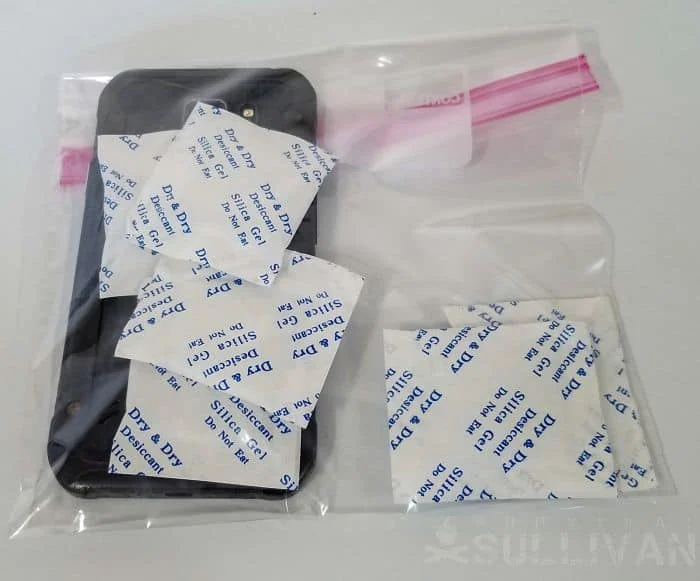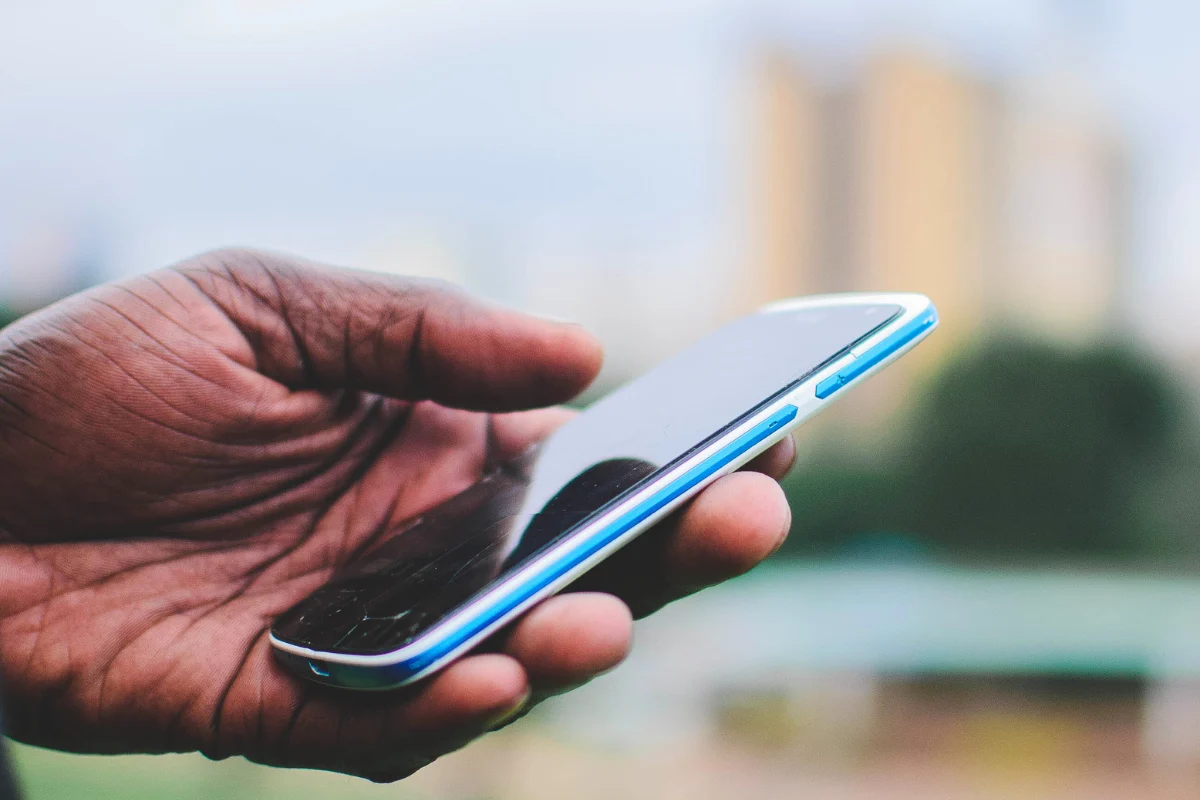When your phone speaker gets waterlogged, standard drying methods like air drying or using silica gel may not always fix the muffled or distorted sound. That’s where alternative techniques come in.
These lesser-known but increasingly popular solutions can sometimes help when the usual steps fall short, especially if you’re trying to avoid a costly repair.
This guide will cover practical, accessible methods that many users have tried successfully. From sound-based water ejection apps to unconventional moisture removal tricks, you’ll learn which ones might work, which ones need caution, and when to try them.
Whether your speaker sounds like it’s underwater or is barely audible, these approaches can offer a second chance at recovery, and no rice bowl is required.
Sound-Based Water Removal Apps
One of the most effective and non-invasive alternatives is using sound-based apps or tools that play high-frequency tones. These sounds create vibration patterns that help push trapped water droplets out of the speaker mesh.
Some reliable options include:
- FixMySpeakers.com – A web-based tool that plays a quick-pulsing sound designed to eject water.
- Sonic (Android/iOS) – Offers adjustable frequencies and durations for deeper cleaning.
- Clear Wave – Built specifically for water removal and audio cleaning through audio pulses.
These apps work best when used shortly after the water exposure, while the moisture is still fresh. Simply play the sound with your phone facing downward, allowing gravity to assist in the process.
They’re especially helpful if your speaker produces muffled or crackling audio, which often means there’s residual moisture still trapped behind the mesh or diaphragm.
Use these tools at a moderate volume and avoid repeating them too often, as prolonged high-frequency exposure may wear the speaker out.
While not a guaranteed fix, many users report immediate improvements. They’re safe, quick, and often more effective than simply waiting for your speaker to dry out naturally.
Vacuum Suction Method
Another alternative method involves using light suction to extract moisture from your phone’s speaker grill. While this may sound risky, using the correct tools makes it reasonably safe.
Here’s how to try it:
- Use a low-power handheld vacuum or specialized phone suction tool.
- Place a mesh or breathable cloth between the vacuum nozzle and the speaker area.
- Run the vacuum in short bursts, holding it a few inches away, not directly pressed against the phone.
This technique may help pull out water droplets trapped inside the mesh or acoustic chamber, especially when combined with gravity (keeping the speaker pointed downward).
Avoid using high-power household vacuums, as they can damage internal components or create static discharge. This method should be viewed as a gentle supplement, not a primary drying strategy.
If done correctly, it can be an efficient way to assist in moisture removal without opening the device.
Using Desiccants Other Than Rice
While rice is a popular method, it’s not the most effective or cleanest. Instead, consider using actual desiccants; substances designed to absorb moisture efficiently without leaving behind dust or residue.
Better alternatives include:
- Silica Gel Packets – Often found in electronics or shoe packaging, these gel packets are excellent at pulling moisture from tight spaces.

- Calcium Chloride-Based Absorbers – These can be found in products like DampRid and work well in enclosed containers.
- Cat Litter (crystal-type) – Some crystal-based litters are made from silica and can be used in emergencies.
Place your phone in an airtight container along with one of these desiccants for 24–48 hours. Make sure the phone is powered off and, if possible, the SIM tray is removed to increase airflow.
Compared to rice, these options absorb moisture faster and more thoroughly, without the added risk of fine particles getting lodged in ports or speaker holes.
Alcohol Dip for Internal Displacement (Advanced & Risky)
For advanced users or technicians, a high-purity isopropyl alcohol dip can help displace water from internal circuits and speed up evaporation. However, this method carries risk and should only be used with caution.
Here’s how it works:
- Use 90–99% isopropyl alcohol; the purer, the better.
- Fully submerge the phone’s logic board or speaker module only, not the whole phone.
- Soak for a few minutes, then remove and let the air dry completely for several hours.
The alcohol displaces water and evaporates quickly, minimizing corrosion. It also cleans mineral deposits left by water exposure. That said, it must never be done with power connected or on a fully assembled phone.
Internal damage is still possible if done improperly, especially if residue remains or alcohol gets trapped in insulation layers.
This is not a beginner-friendly method. But in dire cases, particularly for phones already opened. It’s something repair pros sometimes use with good results.
Ultrasonic Cleaner for Internal Components
Ultrasonic cleaners are professional tools used in many repair shops to revive water-damaged electronics. They work by producing high-frequency sound waves that create microscopic bubbles, which then collapse and dislodge debris and moisture from delicate internal parts.
This method is especially helpful for:
- Cleaning speaker units or logic boards already removed from the device.
- Removing corrosion and mineral buildup caused by water.
- Flushing out moisture from places unreachable by air or cloth.
Typically, the components are submerged in a cleaning solution (often isopropyl alcohol or a specialized electronic cleaner) and placed in the cleaner for 2–5 minutes. Afterward, they must be air dried thoroughly, preferably with warm airflow, for 24+ hours.
This is not a DIY fix unless you have the proper equipment and experience. However, technicians often use it as part of professional recovery services. If your speaker remains unresponsive despite all other methods, this might be your best shot before a full replacement.
Temporary Fixes While Waiting for Full Recovery
If your speaker still sounds muffled or low after drying attempts, you can try temporary workarounds to stay functional.
- Use headphones or Bluetooth speakers to bypass the internal speaker.
- Enable vibration alerts for calls and messages so you don’t miss notifications.
- Use accessibility tools like on-screen call alerts or flashing notifications.
These temporary fixes can help maintain usability while giving your device more time to recover. Avoid forcing loud volumes through the damaged speaker, as this could worsen internal issues.
Be patient during this period, and monitor sound quality improvement gradually over the next 24–48 hours.
What to Avoid When Trying Alternative Methods
Not every DIY trick you read online is safe or even logical. Avoid these common mistakes:
- Using rice inside the speaker ports. It can leave dust or swell with moisture.
- Applying heat from a hairdryer or oven. This risks melting components.
- Shaking the phone aggressively can drive water deeper into fragile circuits.
- Pouring alcohol directly on a fully assembled phone. It’s risky and unnecessary.
Safety and restraint are crucial when experimenting with unconventional fixes. These components are delicate, and damage from incorrect methods may be permanent. Stick to guided techniques and never combine multiple risky methods at once.
When to Give Up DIY and Get Help
If you’ve tried sound-based apps, desiccants, and careful cleaning without success, it may be time to hand it over to a professional. Here’s when to stop DIY:
- Distorted or no sound after 72 hours.
- Signs of internal corrosion like green or white residue.
- Phone won’t charge or shuts off intermittently.
Repair technicians have tools like ultrasonic cleaners, thermal dryers, and micro-soldering stations that go far beyond home methods.
Getting a professional diagnosis could save your data or speaker and prevent further motherboard damage. If symptoms persist or worsen, don’t wait too long.
Conclusion
Fixing water-damaged phone speakers with alternative methods can be effective when done carefully and methodically. From desiccants and apps to ultrasonic cleaning, each method has its purpose, provided the damage isn’t too far gone.
Always remember to act fast, avoid risky myths, and prioritize patience over panic.
These alternative techniques won’t guarantee recovery every time, but they can buy you time, prevent worsening damage, and sometimes even solve the issue entirely.
If things don’t improve, seek help before permanent loss kicks in. Your phone (and its tiny but mighty speaker) deserves the best shot at a comeback.

